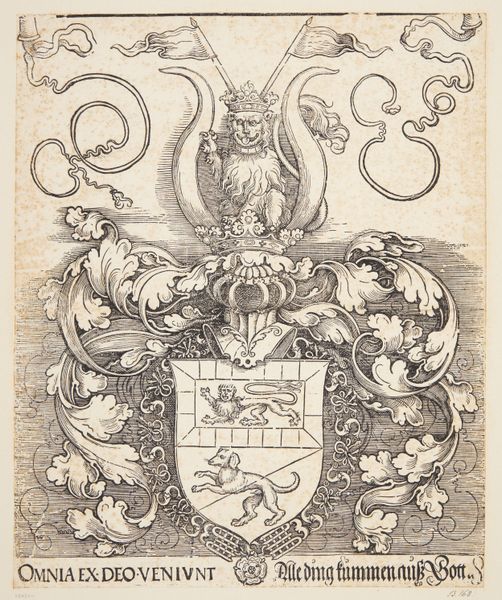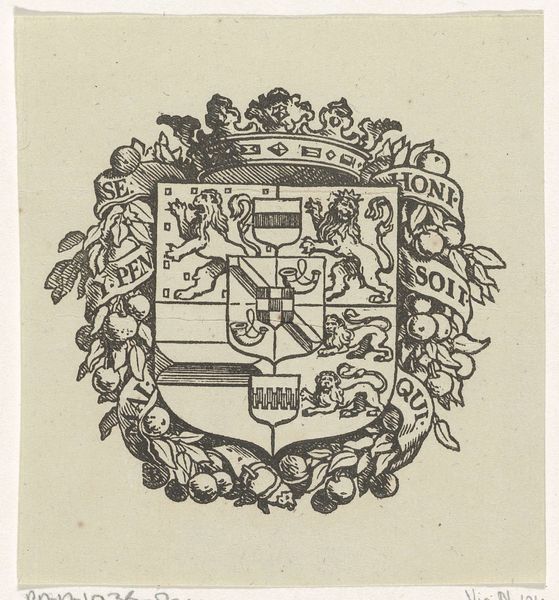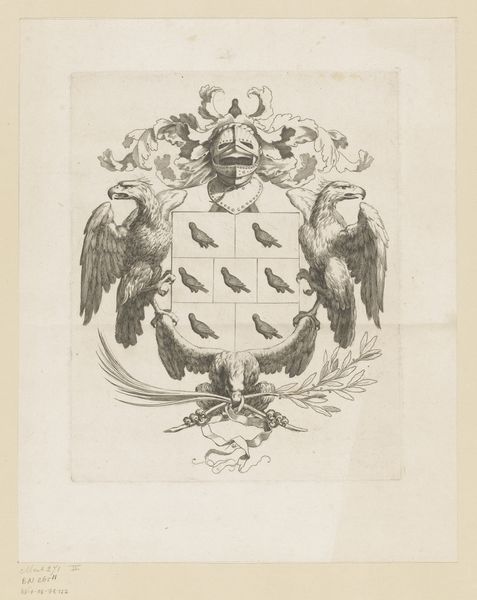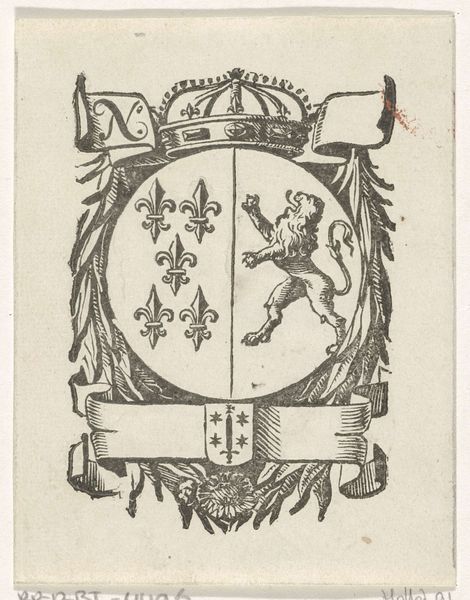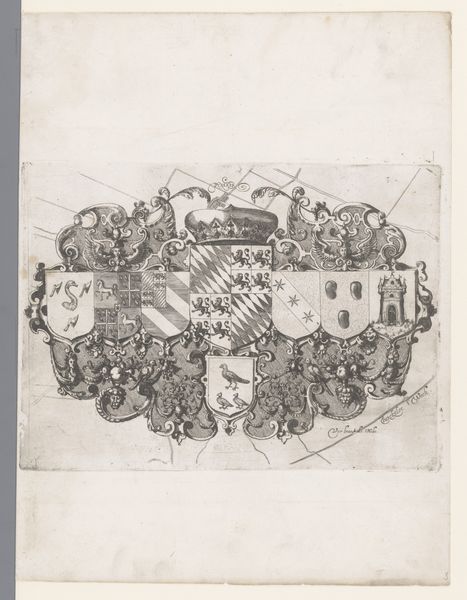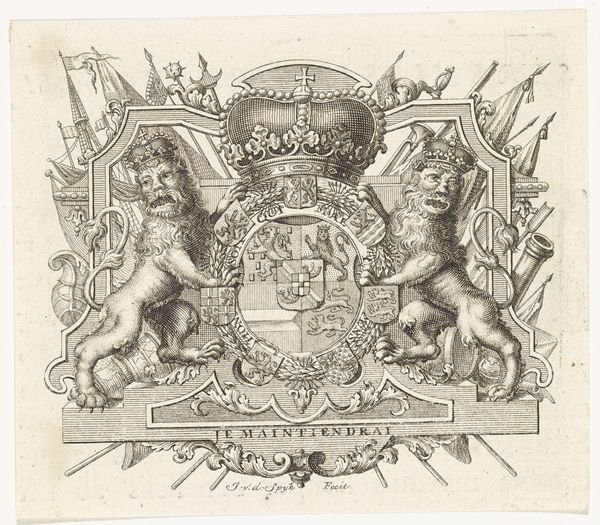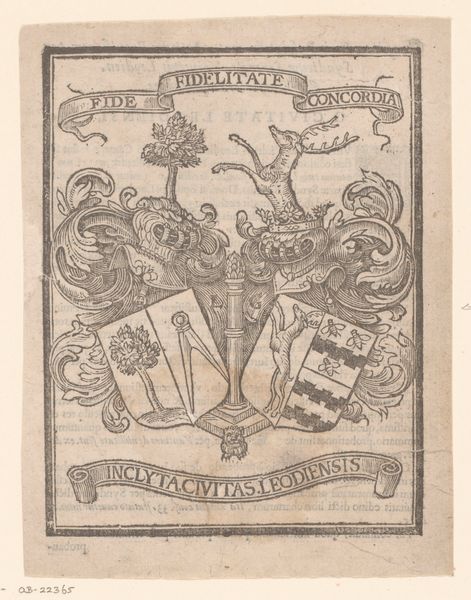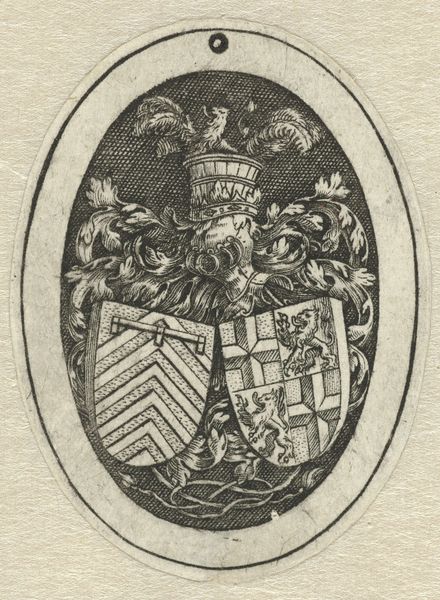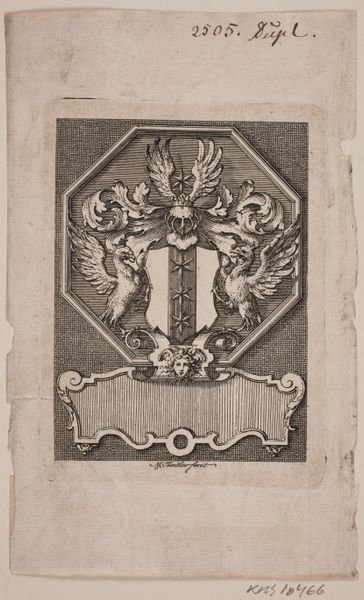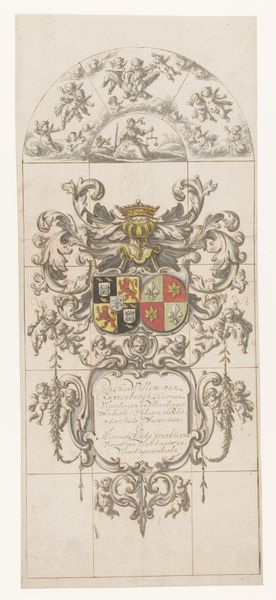
drawing, graphic-art, print, engraving
#
drawing
#
graphic-art
#
baroque
# print
#
old engraving style
#
personal sketchbook
#
sketchbook drawing
#
history-painting
#
engraving
Dimensions: height 183 mm, width 134 mm
Copyright: Rijks Museum: Open Domain
Curator: Here we have a print from between 1700 and 1776, "Wapenschild met twee griffioenen en een gevleugelde helm," or "Coat of Arms with two griffins and a winged helmet," created by Louis Demeuse. What are your initial thoughts? Editor: It strikes me as a powerful statement, rendered with remarkable precision. The stark monochrome palette emphasizes the texture and line work, doesn't it? Curator: Absolutely. The symmetry inherent in heraldry is masterfully captured, yet it is so much more than formal balance. Griffin imagery evokes guardianship and strength. And above, that helmet, winged as it is, suggests swiftness and divine sanction. Editor: I notice how the shields themselves are quartered, with leaves on two panels. What does this botanical reference communicate about place, belonging, origin? Curator: It speaks to deep rootedness and inheritance. Perhaps this family's wealth was acquired by lumber, maybe their ancestors discovered a key tree. In any case, these visual markers speak volumes to cultural memory. And what do you notice about its overall composition? Editor: Well, structurally, Demeuse employed an impressive amount of detail within such a confined space. Observe how the lines interact—dense crosshatching versus the smoothness in the central shield creates tonal variation and guides the eye. The texture certainly elevates this example of Baroque printmaking. Curator: Heraldry often features beasts, but in what measure do these symbols shape a family’s psychology? I am particularly curious about the winged helmet: Is this a mark of pride, of a soaring family ambition? The images they chose speak directly to their self-conception. Editor: One might ponder what exactly motivated Demeuse’s selection and arrangement, which ultimately contributes to the overall formal impact of the print, beyond merely representing a patron's wishes. Curator: Precisely. Consider how these symbols perpetuate meaning from generation to generation. Demeuse's work invites a reflection on the ongoing life and emotional potency of images, beyond purely aesthetics. Editor: I'm left admiring how form, technique, and historical record coalesce here. It truly offers much to consider.
Comments
No comments
Be the first to comment and join the conversation on the ultimate creative platform.


